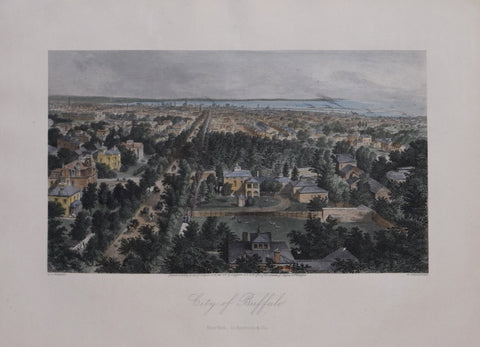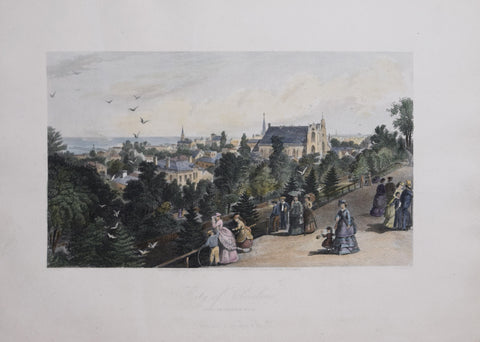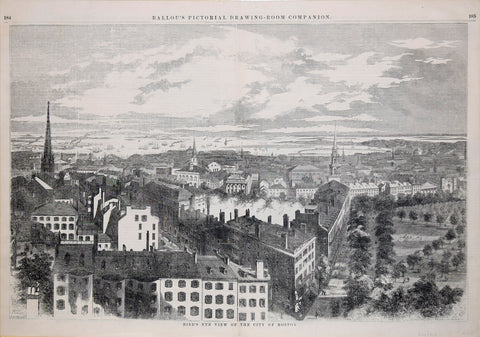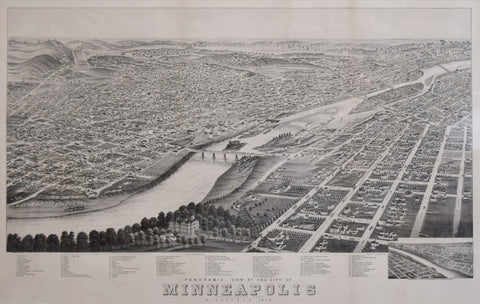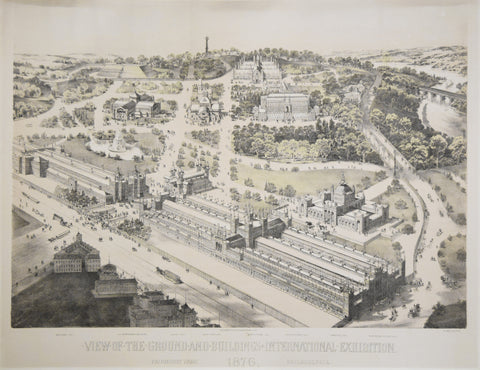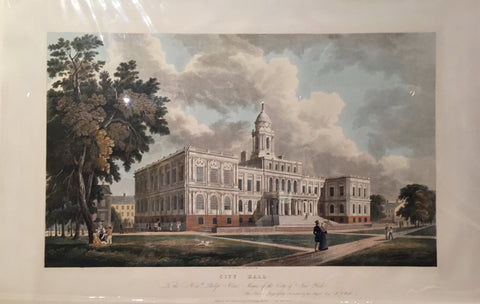
William Guy Wall (1792-1864), engraved by John Hill (1770-1850), City Hall, New York City
WILLIAM GUY WALL (1792-1864), engraved by JOHN HILL (1770-1850)
City Hall / To the Honorable Philip Hone, Mayor of the City of New York / This Plate is Respectfully inscribed by his Servant W. G. Wall.
Engraving with original hand color, 19 3/4" x 28 3/4" sheet.
New York: Charles Behr, Frederick Kahl, Dec. 20, 1826.
William Guy Wall and John Hill’s “City Hall” is an exceedingly rare print and, apart from the Arader copy, no records of past sales can be found on Rare Book Hub. It is in excellent condition and the original color is vividly preserved. It was formerly owned by the Down Town Association in New York.
In his seminal study on John Hill (1770-1850) - the master of American aquatints - Richard J. Koke (1959), p. 101 described the present plate of New York City Hall as “the finest engraved view ever published of that building”. It was made for the bookdealers Charles Behr and Frederick Kahl in 1826; based on a drawing by the Irish-born painter William Guy Wall (1792-1864) it synthesizes the restrained technique of the painter’s carefully applied brushstrokes and the technical mastery that Hill had acquired during his early years as an engraver for the London booktrade. The composition is a masterclass in academic and perspectival drawing. With its receding diagonals and the careful use of staffage and repoussoir motifs Wall achieves a design that reflects the grandeur of this civic monument - an impression reinforced by the relatively low angle of the composition. In line with the classicist aesthetics of the early 19th century, New York City Hall is thus not so much the view of a building than the portrait of an institution; almost sculptural in its appearance City Hall stands as a beacon of the young nation’s belief in democracy. Hence the powerful dedication to Philip Hone, the 57th Mayor of the City of New York. As mentioned above, the academic or classicist backdrop blends with an essentially painterly vision of nature that the print inherits from Wall and Hill’s earlier collaboration on the famous “Hudson River Portfolio” and that would eventually promote the development of American landscape art. The subtle interplay of light and shadows, as well as the delicate coloring in general, make for an impression that in many ways reiterates the 18th and 19th century topos of the locus amoenus - an ideal place or refuge from the trepidations of everyday life. Guy Wall choses to illustrate this ideal character by including different sets of figures and their leisurely activities. The group to the right might indeed be inherited from the pastoral inhabitants of Poussin or Claude’s grand compositions. Similarly, the casually walking couple in front of the building belongs to a Romanticized vision that contrasts with the social realities of epidemics and unrest in the city’s growing neighborhoods such as the nearby Five Points. Yet the French Renaissance facade of City Hall loses nothing of its symbolism and - to quote William Blake - one might well ask “what immortal hand or eye could frame thy fearful symmetry”.
The depiction of City Hall - iconic in its staging of a democratic institution - derives much of its appeal from the collaboration between Wall and master engraver John Hill. As Koke (1959), p. 52 points out, the latter’s artistry resides in his ability to interpret and visually enhance his models. John Hill’s engravings are thus a collaborative effort that adapts the painterly qualities of the original drawing or watercolor to the technical idiosyncrasies of its reproduction. Hill was born in London in 1770 and his upbringing and apprenticeship in the British capital reflect the political environment and aesthetic culture during the long reign of King George III. It is furthermore the proliferating booktrade that laid the foundations for the young apprentice’s technical mastery in his later American works. Its beginnings, however, can be seen as early as 1801 when he was commissioned to illustrate William Henry Pyne’s “Microcosm” of the arts, agriculture, manufactures, trade, and amusements of Great Britain. Only in 1816 did he decide to emigrate to the United States where he bought a house for his family in Philadelphia. Engraving, and especially aquatint, was a still underdeveloped medium in the New World that Hill and his contemporary William Bennett would perfect within decades. Koke (1959), p. 52 confirms: “His prints have been praised for the quality of their execution and the beautiful application of their color. His engraving of New York, Philadelphia, and the American scene have been commended in the highest terms as ‘choice bits’ of Americana, winning him his repute as one of the most talented and prolific workers in aquatint during the Golden Age of American engraving in the early 19th century.” John Hill also set up a printing press in his house and saw through the process from beginning to end. With his commissions for Moses Thomas’ “Analectic Magazine”, he was an important catalyst in the popularization of American landscape painting and the Hudson River School in particular. The print medium allowed him and artists like Joshua Shaw to make their atmospheric landscape depictions accessible to a wider audience and it is in this tradition that one of his major works, the “Hudson River Portfolio”, achieved lasting success. Its plates were based on watercolors by William Guy Walls. Though Walls was not regarded as a pre-eminent artist, his paintings were much admired in the newly founded National Academy of Design. It is thanks to his congenial collaborator that the “Hudson River Portfolio” became, in the words of I.N.P. Stokes, “the finest collection of New York State views ever published”. The same holds true for his engravings of Manhattan and the view of “City Hall” in particular. Until his death in 1850, this series of prints was never to be surpassed. Lit. Richard J. Koke: “John Hill, Master of Aquatint. 1770-1850”, in The New York Historical Society Quarterly 1 (1959), pp. 51-117.
We Also Recommend

